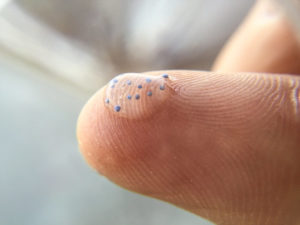The 17th Annual Rural Water Services Conference was held on Thursday, 13th September 2018 in the McWilliam Park Hotel, Claremorris, County Mayo. There were over 300 delegates at the Conference – mostly Group Water Scheme organizers, Local Authority personnel, and those working for regulatory agencies and research bodies involved in the management and delivery or rural water services. The theme of this year’s conference was ‘Assessing Risks in Rural Water from Catchment to Consumer’. There were a dozen speakers during the course of the day, speaking on risks from Climate Change to agriculture, but the one speaker who stood out was Dr. Tom Collins, Chair of the National Water Forum.
The title of Dr. Collins’ talk was ‘Where is away?’. He made clear that this was less a geographic question and more of an ethical one: when we push or throw something away, what implications does it have for others? The question wasn’t just directed at individuals who wilfully pollute. Dr. Collins’ used the example of a bathroom. This domestic space is usually associated with cleanliness and health. But many of the cleaning and healthcare products we use, everything from ear buds to shampoo, do not simply disappear when they wash away down the drain. These products, like many more everyday products, carry material traces and residues that are not easily perceptible to us. These residues circulate and accumulate in our environments, our bodies, and the bodies of others. Take the example of microplastics.
Microplastics are particles of plastic less than 5mm in length. This is not the visible plastic waste we are most familiar with – bags, cups, discarded toys. Microplastics are shed by these larger plastic objects as they break down over time. In addition, microbeads, a type of microplastic, are very tiny pieces of manufactured polyethylene plastic that are in health and beauty products, such as some cleansers and toothpastes. They are also found in the synthetic fibers of our clothes.
Microplastics enter our environments in different, often unexpected ways. ‘Sludge’ is the residue left after our sewage has been treated. It is ‘recycled’ as fertilizer and spread on fields. An EPA study last year found between 4,000-15,000 microplastic pieces per kilogram of sludge from sewage plants. These microplastics are then passed into the soil, rivers, lakes and ultimately back into the drinking water systems and our bodies. The sewage treatment process can also be so effective that it breaks microplastics down into particles that are so small they can be ingested by worms and birds.
Microplastics themselves are not the main risk to human and environmental health. Chemicals and bacteria attach to plastics – this is why plastic pellets are used to clean up oil spills. Once plastic enters the digestive system of a human or animal, the hot, acidic environment causes chemicals on the plastic to leach.
When we think of contaminants in our water and environments it is common to think of them as discrete and isolated, problems we can ‘manage’. Microplastics unsettle this notion. Consider the scale and ubiquity of microplastics. Not only are they found in such large quantities in so many of the everyday products we use and surround ourselves with, they have also been accumulating for decades, and will continue to for decades to come. The smaller they break down the more unsettling this becomes. Microplastics of less than 0.001 mm are small enough to cross into cells and permeate the body. We live in a plastic world whether we like it or not.
What is an adequate response to this situation? This was the question asked of Dr. Collins by one of the conference delegates. It is not a problem easily fixed through infrastructure upgrades – the usual technical remedy for water-related problems. The problem is a global one that revolves around the many, often unknown toxins that are released into the environment without us even thinking about them, pushed away for others to deal with and be exposed to.
One response Dr. Collins proffered was for us to take more responsibility for what we throw away or send away. This was understood by some present as a call for greater individual responsibility, but this wasn’t all he meant. Individual behavioral change is not going to be enough. But neither can we wait for planetary scale intervention. Dr. Collins praised the work that Group Water Schemes were doing in protecting their water sources. This is collective work that begins with the simple but vital recognition that specific bodies of water, a lake, a spring, a river, are always part of much bigger systems and stories – what some call a hydro-social cycle. Connecting the local and the global through this kind of collective work seems a good place to figure out what an adequate response to our contaminated water systems might be.

